Please note that some of the links below, in this article about the British Shorthair cat, are affiliate links. This means that, at no additional cost to you, I will earn a small commission if you click through and make a purchase.
- All
- Gallery Item
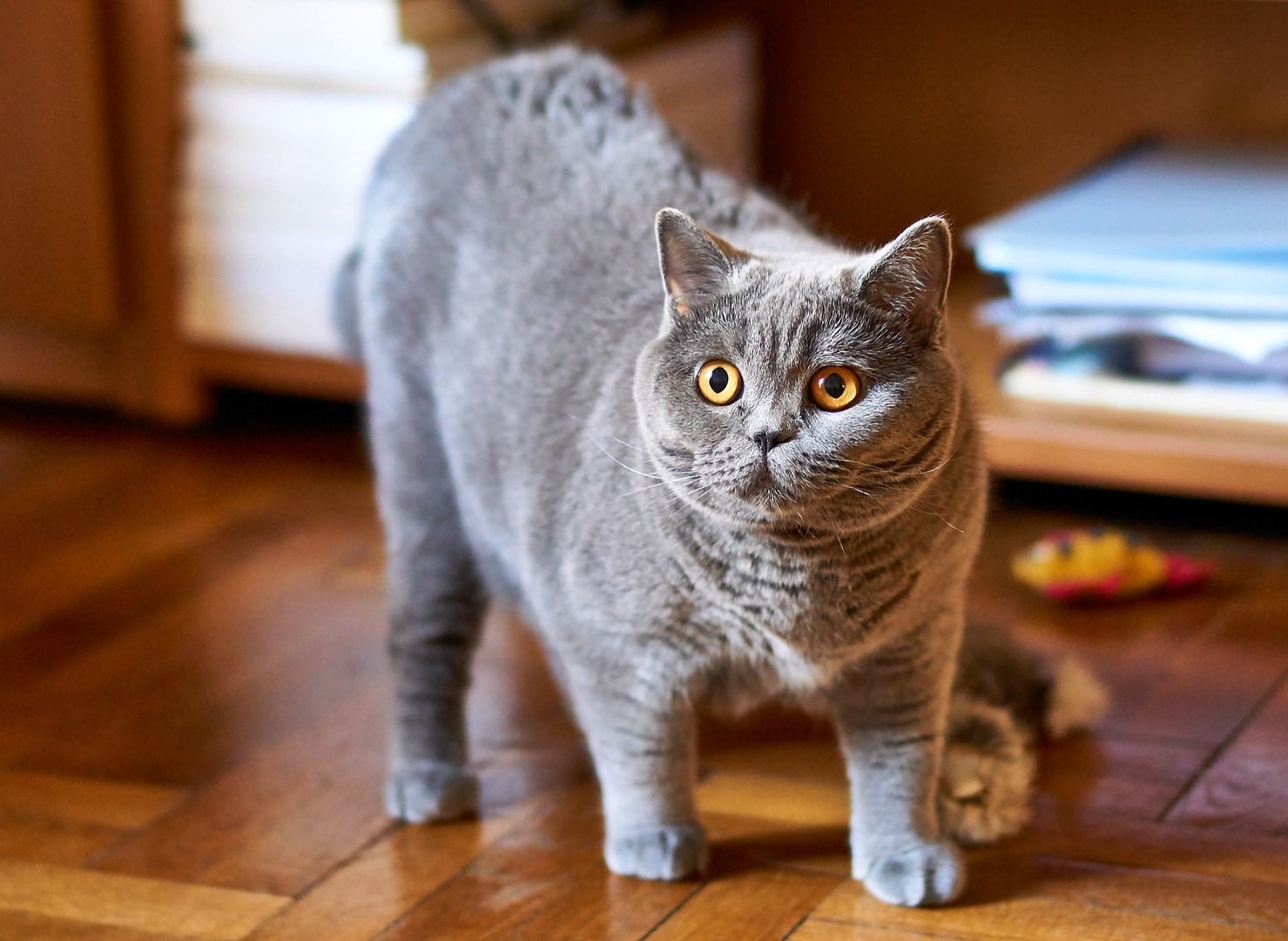
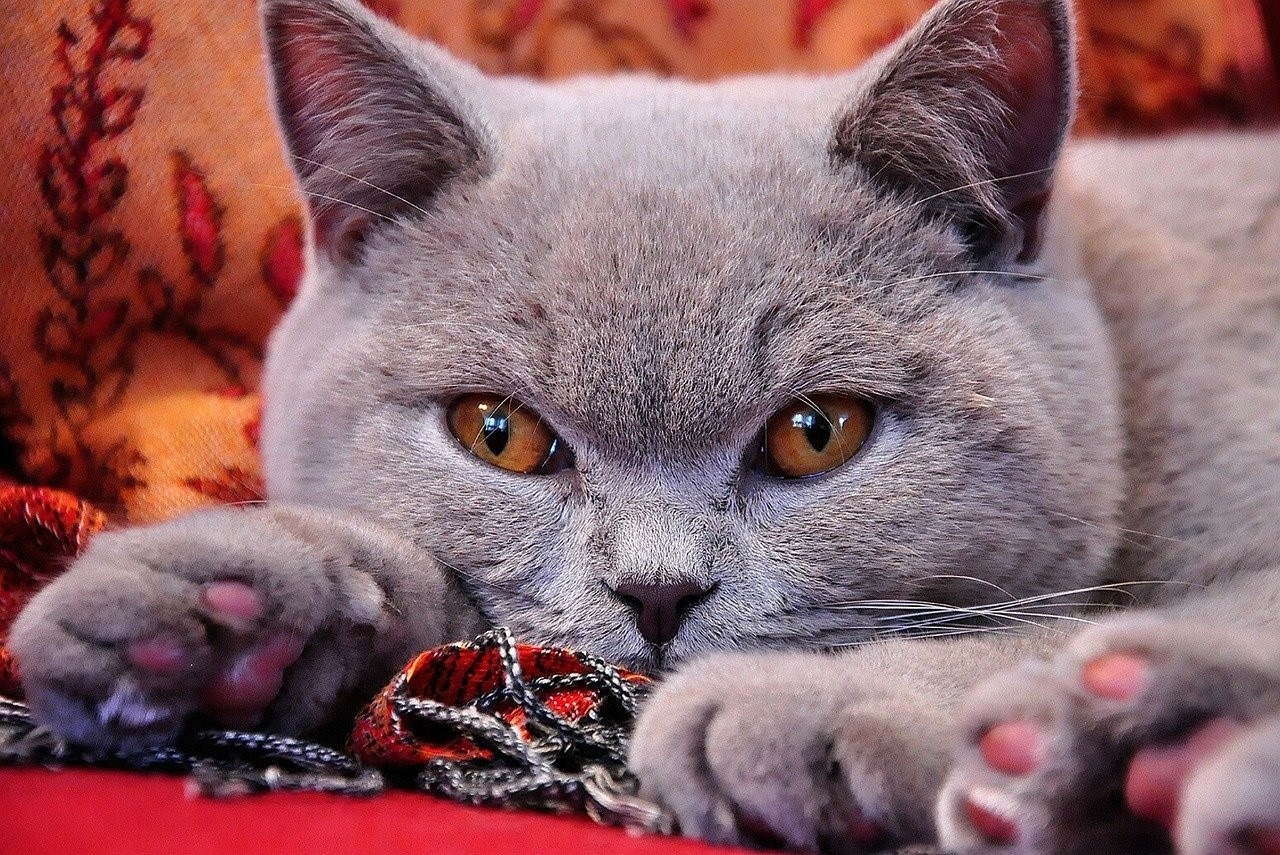
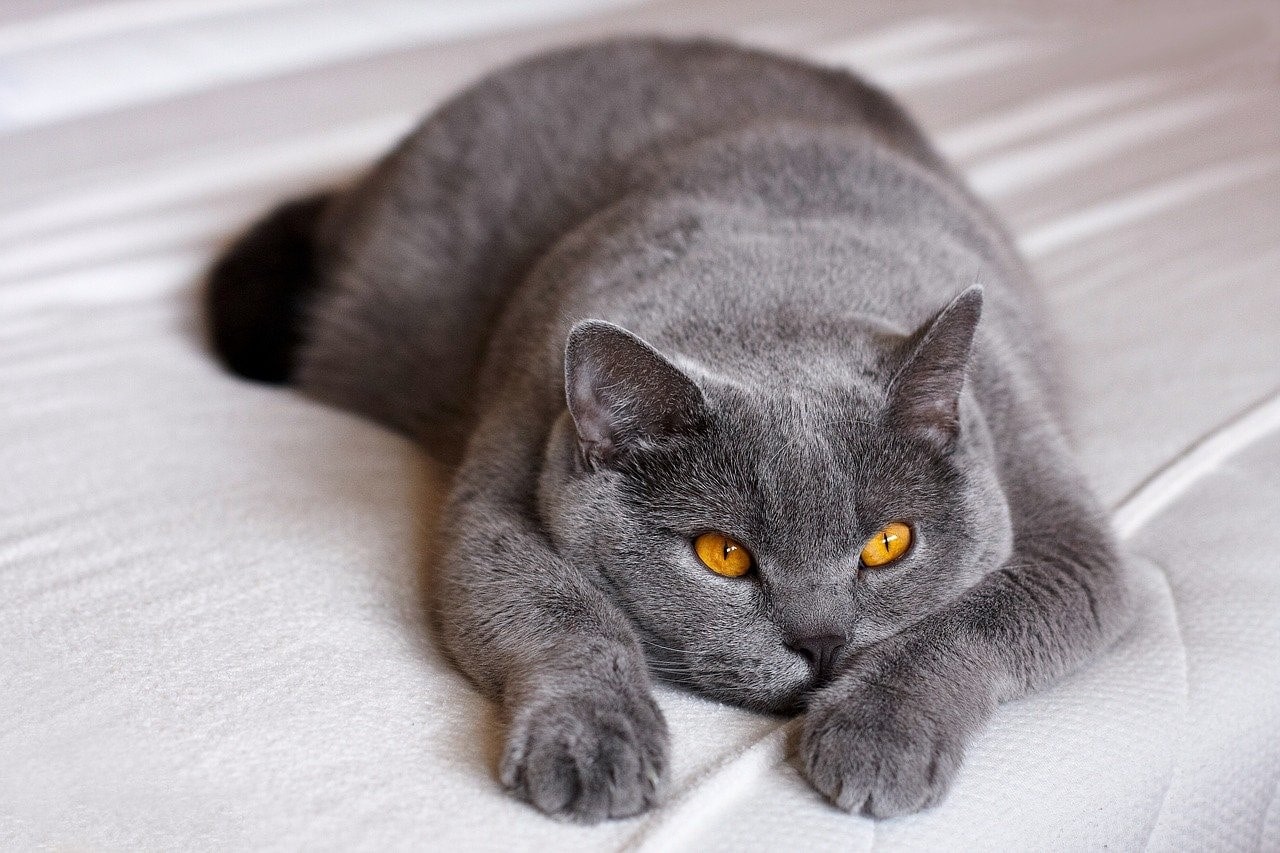
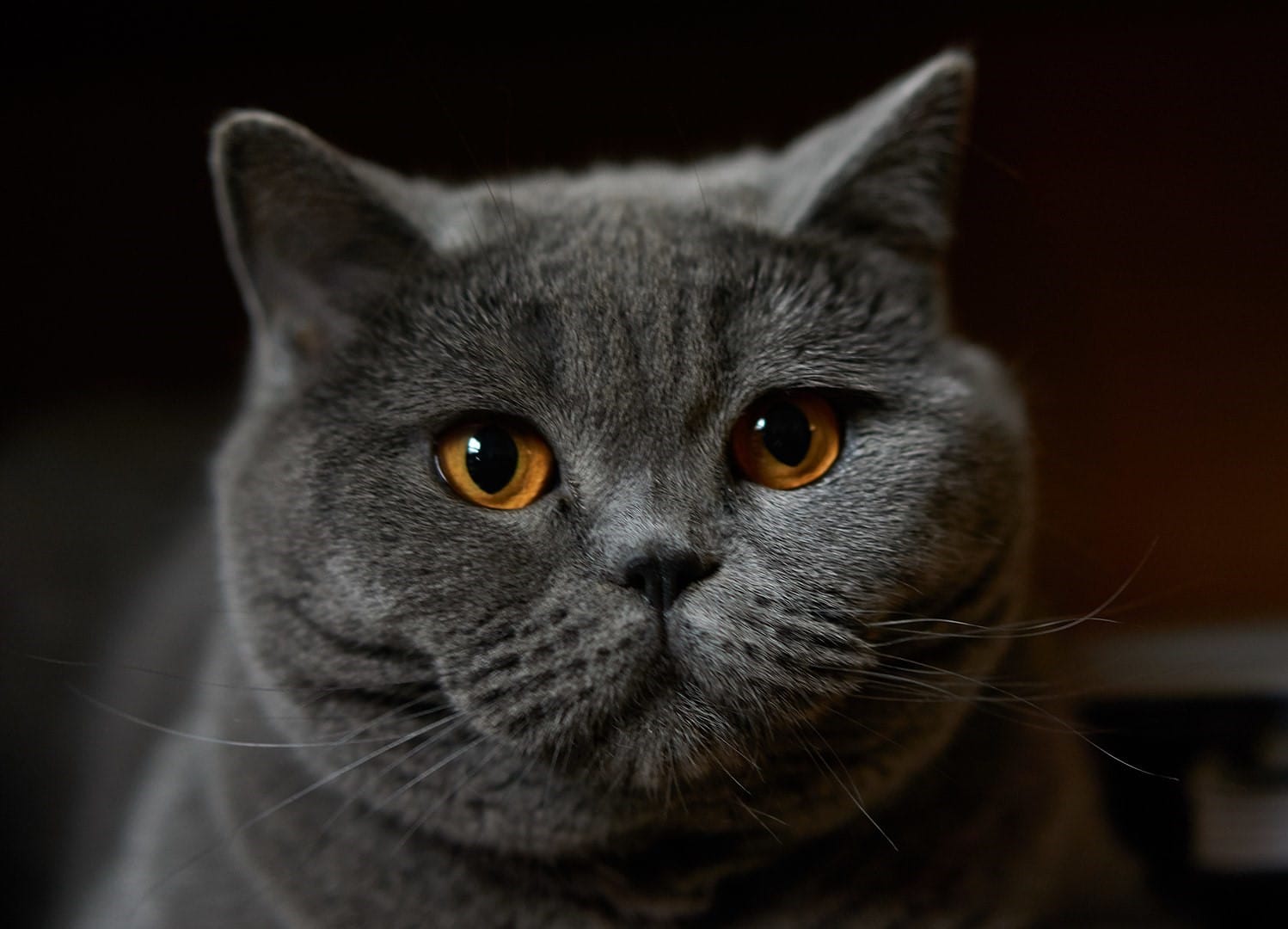
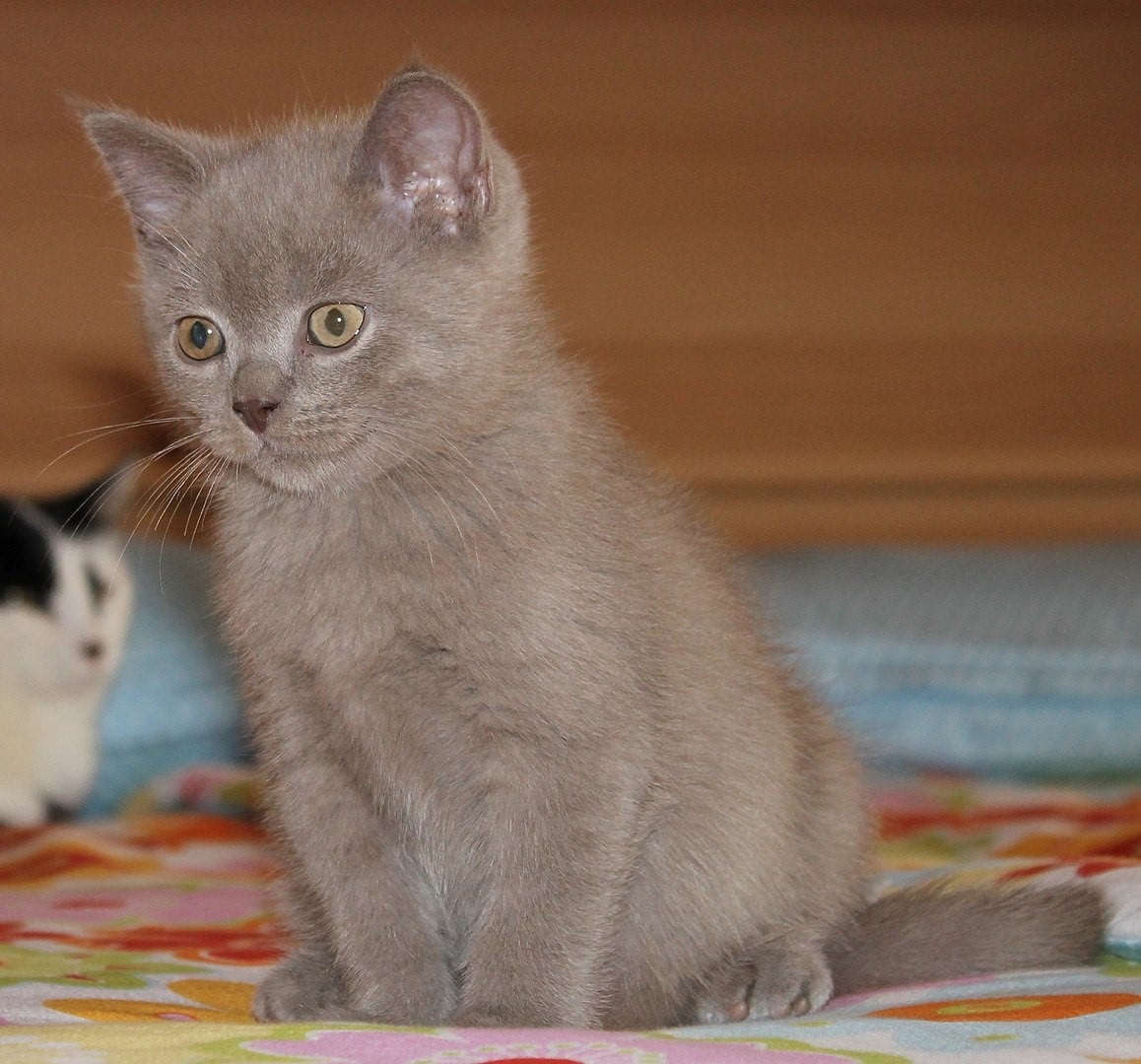
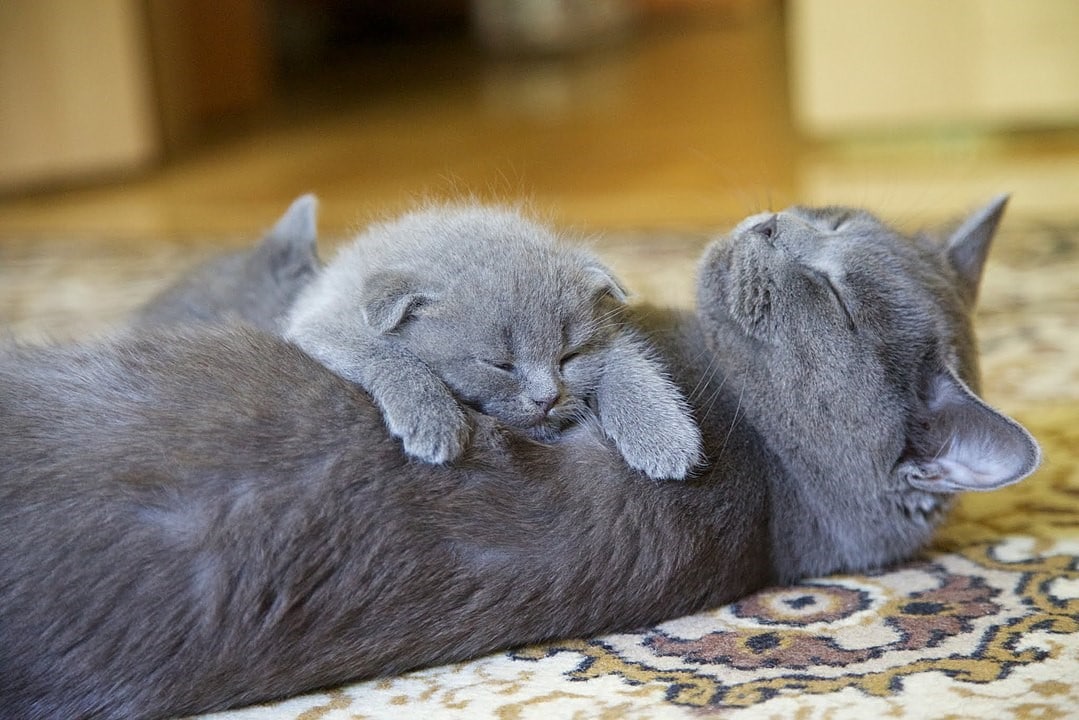
The British Shorthair cat (not to be confused with the British Longhair cat) is a loving, caring, playful cat that enjoys socializing with family and other animals. Though not as large as the Maine Coon cat, British Shorthair cats are nevertheless heavily-muscled, medium-to-large in size, prone to laziness and inactivity, and yet still a firm favorite pedigreed pet worldwide.
The History of the British Shorthair Cat in the USA
Unlike many of its cousins, the British Shorthair cat has a relatively uncomplicated history that’s easy to track. The British Shorthair cat also bears the proud distinction of being one of the world’s oldest cat breeds.
It is thought that the British Shorthair cat originated in ancient Egypt, travelling across Europe at that time on-board marauding ships that docked at ports of call. By the time the ships left port, more than one colony of cats had been established in every country visited.
Pavement specials at best at that time, the British Shorthair cats are descendents of those cats that travelled abroad with pillaging Romans, invading lands and inhabiting Great Britain in 43 AD. The British Shorthair cat was named the Roman cat until the 1800s, when a cat fancier took a liking to them and began breeding.
Harrison Weir is credited with popularizing the British Shorthair cat in 1870. The “Father-of-the-Cat-Fancy”, Weir is recognized as the first professional British Shorthair cat breeder and is further credited with establishing the first official cat show held in London’s Crystal Palace in Great Britain in 1871.
WWI saw a critical decline in breeding numbers, and by the end of the war the British Shorthair cat breed had fallen out of favor with British folk who had many more things to contend with at that time. Ardent British Shorthair cat breeders began cross-breeding with assorted domestic short-haired breeds, Russian Blues, and Persian cats. The resulting breed is what we now know as the British Shorthair cat.
Remaining much out of America’s line of sight until the 1960s, the American Cat Association of America (ACFA) recognized the British breed in 1967, and accepted it for championship in 1970, but only in one color: solid blue. Today, blue remains the most prevalent and recognized color in both Britain and abroad.
Between 1970 and the early 1980s, British breeders began experimenting with coat colors, points, and patches. The British Blue Shorthair cat is the only British breed most North Americans are aware of, and today, the British Shorthair ranks at #4 on the Cat Fanciers’ Association’s (CFA) show bench.
With official breed recognition only 40 years ago, the British Shorthair cat remains a minority breed on the CFAs breed database.
In March 2011, Project Gutenberg released a copy of Harrison Weir’s book entitled “Our Cats and All About Them: Their Varieties, Habits, and Management; and for Show, the Standard of Excellence and Beauty; Described and Pictured”. Get your free copy here.
The personality of the British Shorthair cat
The British Shorthair cat likes to keep a low profile but is a loyal cat that’s pretty easy to live with. They’re quiet, calm and collected.
British Shorthairs are also affectionate and playful (but not clingy). Chatty but soft-spoken and somewhat reserved, the British Shorthair cat will nonetheless play around and have some fun with the family and other pets if the mood strikes. Be warned though that they’re not fond of being picked up, but will stay a brief moment on your lap while accepting your grooming efforts.
Physical characteristics of the British Shorthair cat
A non-hypoallergenic cat breed with a short, dense coat that does not need to be groomed all the time, the British Shorthair cat is currently bred in colors that range from white to silver, tortoiseshell to smoky, and may even be shaded and patched in bold, solid colors (known as ‘self’ colors), tortoiseshell blends, bi- or tri-colors, colorpoint, or a variety of tabby. Tails are thick at the base and end in a rounded tip.
While cat lovers like to say that a cat’s coat color affects their personality and such, there is no existing research to substantiate this. Although melanin levels may play a role in determining this, a cat’s personality is determined more by breed specifics, socialization opportunities (play groups or other pets in the house) and their home environment.
British Shorthair cats have beautiful, teddy bear-like features and big, rounded eyes that should be orange or amber in color according to original breed show standards.
CFA breed standards for the British Shorthair are quite specific, and are based on a number of factors:
- coat color
- eye color
- leather and pad color
- evidence of hybridization (which would result in either chocolate, lavender, cinnamon, patchy white, or fawn colors).
Note:
Not all coat colors are recognized as show standards. For instance, the only time that white as a coloring is acceptable on a British Shorthair cat (in show standards) is when the cat itself is pure white, with no other color markings whatsoever. For this purpose, today’s white British Shorthair cats are developed and successfully show-bred using Persian cats only.
For a complete guide to British Shorthair breed standards, click here.
They have a medium to large body with a broad chest and short to medium legs. Known for their stocky, muscular bodies (also known as ‘cobby’ bodies), the British Shorthair has a face set wide apart but proportional in nature, with ears that are rounded in shape.
A somewhat brachycephalic cat with a shortened nose, the British Shorthair nevertheless displays none of the breathing difficulties that plague most other pedigree breeds. Kittens take a long time (in cat years) to reach adulthood, maturing between 3-4 years old in human years. As with most cat breeds, the British Shorthair starts to enter its senior years at around age 7 in human years.
Males weigh between 9-17 lb, whereas females weigh between 7-12 lb. Males stand at a height of up to 14 in., and females could reach a height of 12 in. British Shorthair cats average between 22-25 in, and have a lifespan of anywhere between 15 – 20 years – depending on diet and care.
Caring for the British Shorthair cat
Grooming
A low-maintenance cat, the British Shorthair needs weekly grooming during seasonal changes when coats may be thickening or thinning. A huge belly-rub fan, the British Shorthair enjoys a good tummy rub as part of the grooming process, but tends not to linger. Brushing is seen as a show of affection and the British Shorthair enjoys being groomed.
Brushing the British Shorthair cat’s teeth regularly will prevent periodontal disease, but daily dental hygiene is always best, especially as your cat ages.
Check your pet’s eyes regularly for infections and dirt, and wipe gently with a clean, damp towelette or a face cloth, taking care to use a clean spot for each eye.
Domestic pets should always have fresh, clean water. Outdoor cats need clean, fresh water outside, too.
If cleaning your pet’s ears, be sure not to use the in-ear buds that humans mostly prefer, and stick to soft cloth or rounded cotton balls that cannot do harm.
Feeding
Giving your British Shorthair cat the perfect (or at least close to perfect) food is really important because the nutrients in the food you give them determines their overall health and well-being. Therefore, you should be feeding her between three-five small meals per day (at around half a pouch of wet food per meal, or a handful of kibbles).
As with all kittens switching to solids, your British Shorthair kitten can eat dry kibble food although we recommend adding a little warm water to the bowl to soften the kibbles for them. As they grow older, you could spoil them with red meat.
An indoor cat that doesn’t really get much exercise, the British Shorthair’s diet should be carefully monitored to avoid overfeeding. Most people will tell you to feed a cat on demand, but we recommend a monitored diet for indoor cats, such as the high-protein indoor-cat adult diet. For kittens, we recommend a kitten-specific diet that’s easy to digest, supports their immune systems, and is packed full of essential vitamins and minerals (and taurine).
Senior cats should be placed on diets that include a smaller-sized kibble, contain a mix of dry and wet food, that will support joint and muscle health as they age.
A well-looked-after British Shorthair adult cat could live to anywhere between 15 and 20 human years. Kittens mature around 3-4 years, and most cats are already considered seniors at around 7-8 years. That means that your cat’s diet in her later years is vital to her overall health, well-being, and longevity.
Don’t skimp on the essential nutrients.
Common diseases of the British Shorthair cat
The most common diseases and conditions that affect the British Shorthair are:
- obesity and/or diabetes due to inactivity and feed-on-demand feeding routines
- arthritis, which is the swelling and tenderness of one or more joints
- hyperthyroidism, which can accelerate metabolism, causing unintentional weight loss and a rapid or irregular heartbeat
- ear mite infestations (also known as Otitis Externa)
- hypertrophic cardiomyopathy which is a disease in which the heart muscle becomes abnormally thick
The British Shorthair Cat Compared to Other Cats
British Shorthair | |||
|---|---|---|---|
Longevity | 15+ years | 13+ years | 12+ years |
Height | 22-25 in | 10-16 in | 29-31 in |
Weight | 7-17 lb | 15-25 lb | 8-15 lb |
Coat | Short and dense | long and thick | short and dense |
Eyes | green, gold, blue, odd | blue | green, yellow, gold, copper |
Distinguishing Features | medium-to-large body | shaggy-like fur | sleek, elegant bodies |
Personality | calm, cuddly, independent | sociable and very playful | intelligent, talkative, sociable |
Temperament | lovable and sociable | lovable and adaptable | energetic and playful |
Land of origin | United Kingdom | United States | Iran |
Year of origin | 43 AD | 1700 | 1350 |
Recognized By | CFA, ACFA, FIFe, TICA | CFA, ACFA, FIFe, TICA | CFA, ACFA, FIFe, TICA |
World Ranking | 2 | 3 | 6 |
Five quick facts about the British Shorthair cat
The British Shorthair cat and the British Blue cat are the same cat
At a stage, cat agencies such as The CFA only recognized the British Shorthair in the well-known “blue” (grey) color, and for a while, the British Shorthair was recognized as the British Blue. As more colors were introduced and accepted in-show, the breed description was changed to simply British Shorthair or “The British” to reflect acceptance of the various coat colors.
The British Shorthair was the first British pedigreed cat to be displayed at British cat shows
The British Shorthair cat may have inspired Lewis Carroll's Cheshire Cat.
A British Shorthair once had the world's loudest purr.
A British Shorthair cat starred in Stephen King’s Pet Sematary horror movie
The original movie (shot in 1989) uses a British Shorthair to portray the dead cat, Winston Churchill, that comes back to life. In the 2019 remake of the same name, a Maine Coon cat portrays the same character. The producers felt that the Maine Coon better resembled the cover art from Stephen King’s original book cover.
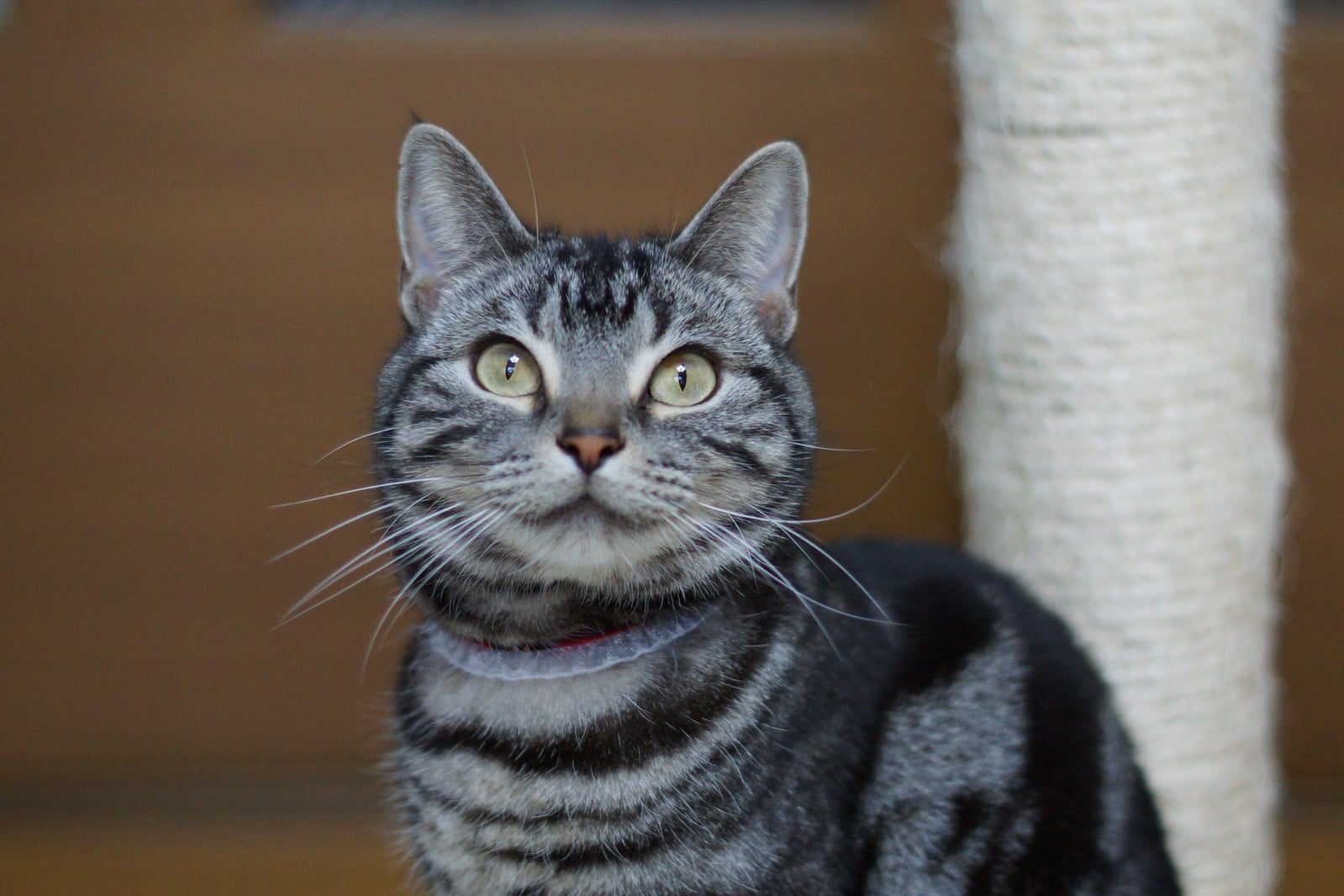
American shorthair cat
Lorem ipsum dolor sit amet, conse ctetur adipisicing elit, sed do eiusmod tempor incididunt ut...
Show More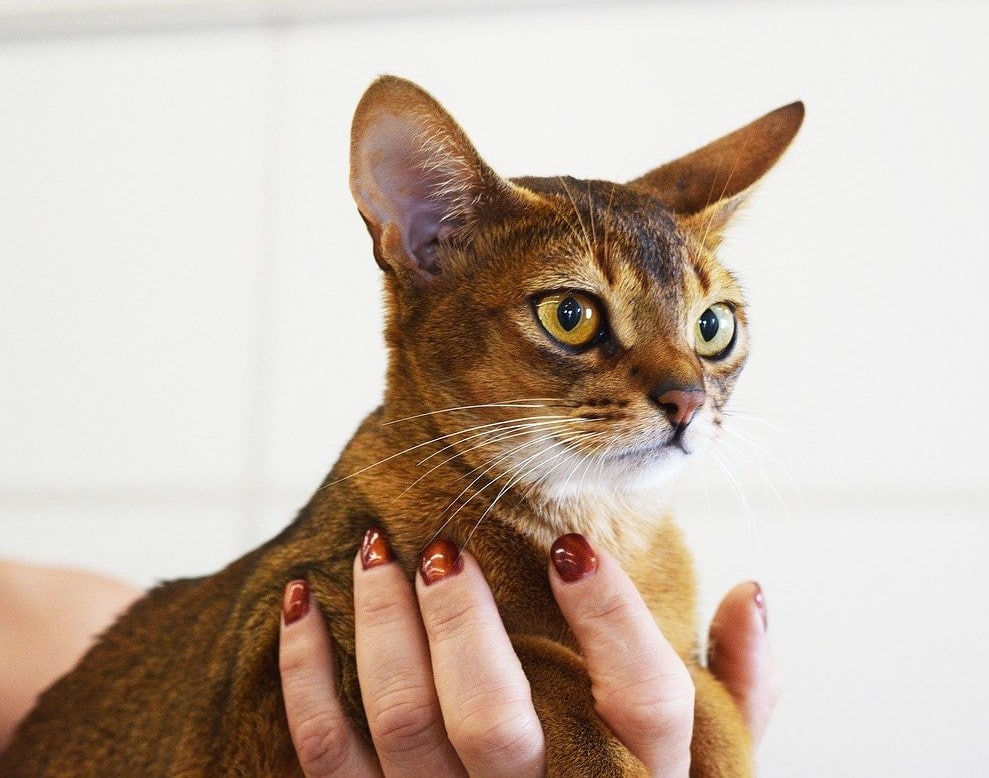
Abyssinian
Lorem ipsum dolor sit amet, conse ctetur adipisicing elit, sed do eiusmod tempor incididunt ut...
Show More
Bengal
Lorem ipsum dolor sit amet, conse ctetur adipisicing elit, sed do eiusmod tempor incididunt ut...
Show More
Item Four
Lorem ipsum dolor sit amet, conse ctetur adipisicing elit, sed do eiusmod tempor incididunt ut...
Show More
Default Title
Lorem ipsum dolor sit amet, conse ctetur adipisicing elit, sed do eiusmod tempor incididunt ut...
Show MoreSources
- Cat Breeds 101. British Shorthair. Retrieved December 20 2020 from https://catbreeds101.com/british-shorthair/
- The Cat Fanciers Association. About the British Shorthair. Retrieved December 20 2020 from https://cfa.org/british-shorthair/
- My British Shorthair. British Shorthair Colours – Full Guide. Retrieved December 20 2020 from https://mybritishshorthair.com/british-shorthair-colours-full-guide/
- Cats Love To Know. 13 Gorgeous Grey Cat Breeds. Retrieved December 20 2020 from https://cats.lovetoknow.com/cat-breeds/13-gorgeous-grey-cat-breeds
- Hill’s. British Shorthair Information and Personality Traits. Retrieved December 20 2020 from https://www.hillspet.com/cat-care/cat-breeds/british-shorthair
- Cattime. British Shorthair. Retrieved December 20 2020 from https://cattime.com/cat-breeds/british-shorthair-cats#/slide/1
- Daily Paws. British Shorthair. Retrieved December 20 2020 from https://www.dailypaws.com/cats-kittens/cat-breeds/british-shorthair
- The Spruce Pets. British Shorthair (British Blue): Cat Breed Profile. Retrieved December 20 2020 from https://www.thesprucepets.com/learn-all-about-the-british-shorthair-cat-4705418
- Paw Culture. All About British Shorthairs. Retrieved December 20 2020 from https://www.pawculture.com/breed-basics/cat-breeds/all-about-british-shorthairs/
- Petfinder. British Shorthair. Retrieved December 20 2020 from https://www.petfinder.com/cat-breeds/british-shorthair/
- Purina. British Shorthair. Retrieved December 20 2020 from https://www.purina.co.uk/cats/cat-breeds/library/british-shorthair
- Royal Canin. British Shorthair. Retrieved December 20 2020 from https://www.royalcanin.com/za/cats/breeds/breed-library/british-shorthair
- Vetstreet. British Shorthair. Retrieved December 20 2020 from http://www.vetstreet.com/cats/british-shorthair#1_ugw20zmq
